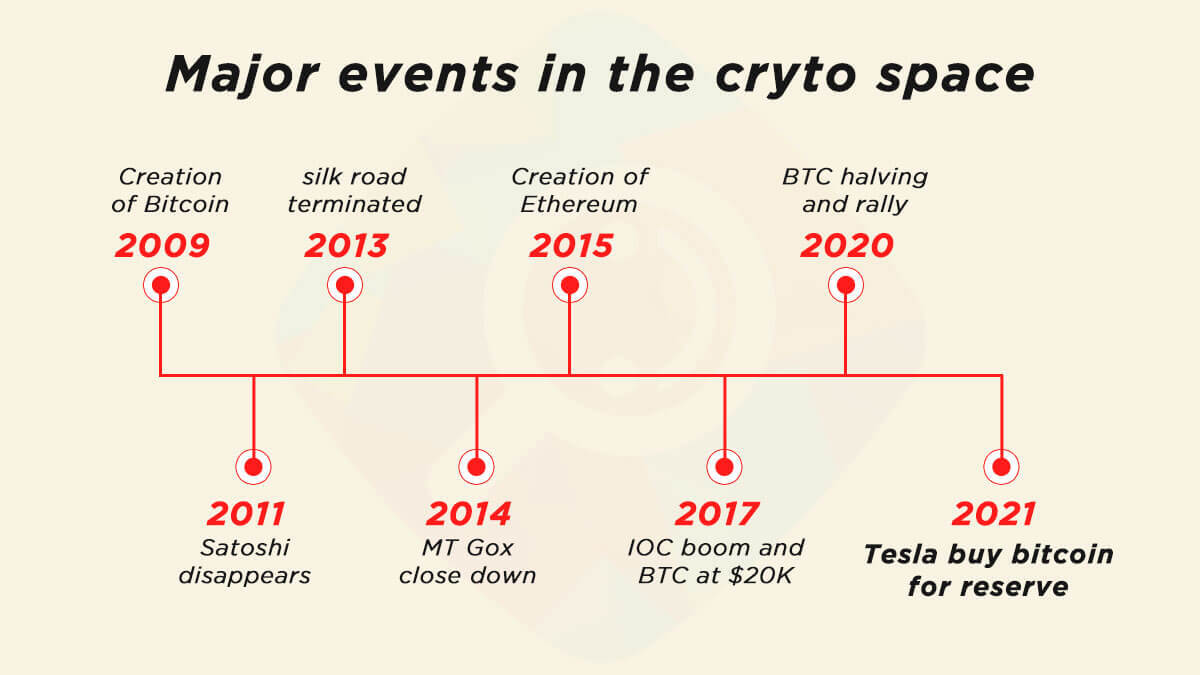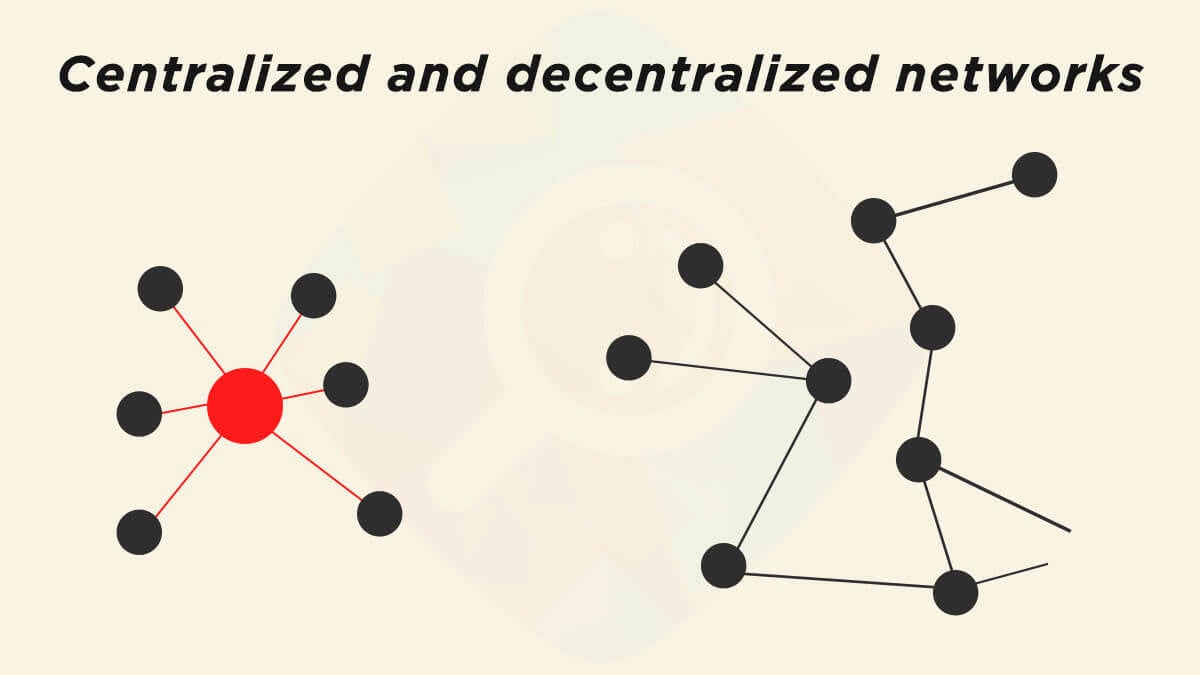Cryptocurrency has been termed anything from "future money" to "an extremely risky investment” that should not be touched without vast knowledge about the topic. So, which one is it? And the greater question is whether you should put your hard-earned money into it.
If you want to learn more about cryptocurrencies, you've come to the right place. We created this comprehensive beginner's introduction to digital currencies so that those with little to no familiarity with them may learn everything there is to know about them. Let us begin with the basic of what is a cryptocurrency, and then dive into it.
What is CryptoCurrency?
It's possible to get tripped up by cryptocurrency's technicalities, so let's start with the fundamentals. Cryptocurrency is digital money. There are no actual coins or bills connected with it because it is entirely digital. Cryptocurrencies are not bound to valuable assets they are not linked to something of worth in the physical world, which causes the value to rise or fall erratically.
Most cryptocurrencies functions without the need for a centralized government such as a bank or government, instead of relying on a distributed ledger to transfer power across its users. A cryptocurrency has a predetermined fiscal system, such as a fixed token cap or enabling the production of new tokens based on predetermined laws.
The History of CryptoCurrency
A cryptocurrency newbie may believe that the various currencies sprung out of nowhere, yet there is a significant backstory. Cryptographers have been experimenting with the concept of cryptocurrencies for decades before the creation of Bitcoin. The subject of ‘what is cryptocurrency?' was not fully addressed at the time, but that didn't stop entrepreneurs from attempting to construct their own. The most well-known of these initiatives was made by Nick Szabo, a computer scientist who created Bit Gold, a cryptocurrency, in 1998.
With the invention of the internet, the capacity to move information and data grown rapidly. Email transformed physical letters into a digital format, allowing data transfers between parties in seconds. Cryptocurrency is a similar premise; however, it is about money and value.

Attempts at online monetary alternatives, such as Digi Cash, were made before the year 2000, however, the first modern-day cryptocurrency to acquire considerable popularity and sustainability did not appear until 2008. Satoshi Nakamoto, the asset's pseudonymous founder, published Bitcoin's (BTC) white paper in 2008 to define the written concept of the currency.
When was Bitcoin created?
In October of 2008, the enigmatic Satoshi Nakamoto published a white paper. This paper outlined a decentralised network that was utilised to power a new cryptocurrency known as Bitcoin. It would take years for retailers to accept the new form of money as payment, but Bitcoin gradually gained momentum.
Bitcoin addressed the issue of people spending the same asset twice, often known as double-spending. Bitcoin is built on blockchain technology and is administered by a global network of computers that collectively validate payments and secure the network from hackers due to the lack of a system failure.
Bitcoin first appeared on the blockchain network in 2009. Since then, other people and corporations have created a slew of other crypto assets, some of which claim to be quicker or more private. Other blockchains, like Ethereum, have also been built, providing developers with a foundation on which to develop a range of new assets and solutions.
How does it work?
Except for a few exceptions, most cryptocurrencies operate on a blockchain. A blockchain is essentially a network of several computers all over the world that pool processing power to confirm network operations.
As part of the mining process, the first person to answer a challenge receives a reward for boosting the network's functioning. This is known as mining. Mining is required to increase the supply of any given asset from its maximum supply. Blockchain aids in the decentralisation of assets, providing major security advantages over centralised systems with a single point of failure.

Blockchains are often powered by consensus algorithms based on proof-of-work or proof-of-stake. PoW is dependent on miners, who frequently assign specific computer equipment to the process. PoS, on the other hand, is powered by staking. The staking system distributes incentives to help maintain the network by storing assets in certain authorised wallets.
A few PoS assets additionally support master nodes, a more complex staking procedure that generally requires a particular quantity of coins.
What is a cryptocurrency used for?
One of the early benefits of Cryptocurrency was the ability to move enormous sums of money anonymously, free of government or institutional influence. Some bitcoin owners now utilise cryptocurrencies to handle basic tasks such as bill payment. Others use it as security when applying for online loans.
Others put their digital currency to work by investing in new businesses. The pairing of cutting-edge technology with cryptocurrency appears to be a natural fit. You may also travel the world with your digital cash. Reach at your destination in the luxury vehicle you purchased with your bitcoin or on a flight that accepts Bitcoin.
What is cryptocurrency mining?
The reward for confirming transactions on a blockchain is referred to as cryptocurrency mining. When a transaction is added to a block on the blockchain, it is encrypted. As a result, before the blockchain can continue adding transactions to the next block, these transactions must be checked for authenticity. This is when miners enter the picture.
Miners utilise their computing capabilities to solve complicated mathematical problems to validate transactions in a chain block. The miner who solves the challenge and verifies all of the transactions in a block is rewarded for their efforts. Proof of work is a way of securing a blockchain (POW).
Types of Cryptocurrency?
Let's go over a little detail that many people miss while attempting to grasp the basics of cryptocurrency. Coins and tokens are the two kinds of cryptocurrency.
Coin – A coin, such as Bitcoin, Ethereum, Litecoin, or Ripple, is a cryptocurrency with its own blockchain.
Token – A token is a coin that is created on another blockchain, such as a decentralised application (dApp) that runs on Ethereum's blockchain. With tokens, there is another crucial distinction. Tokens are classified into two types: utility and security.
This information is just the tip of the iceberg into the vast knowledge of cryptocurrency. In our next article on cryptocurrency, we would discuss different types of cryptocurrency, where to buy them and more.








 Follow Us
Follow Us












Useful for me, Thanks